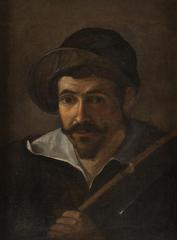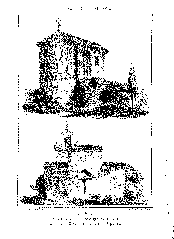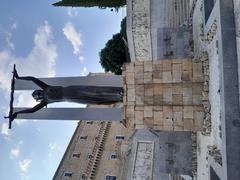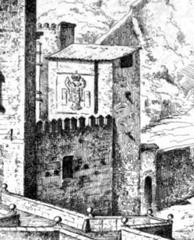Visiting Museo de Santa Cruz in Toledo: Hours, Tickets, and Tips
Date: 19/07/2024
Introduction
The Museo de Santa Cruz, located in the heart of Toledo, Spain, stands as a testament to the rich cultural and historical tapestry of the region. This iconic museum, housed in a former 16th-century hospital, offers visitors a comprehensive journey through Spain’s artistic and historical heritage. Designed by the renowned architect Enrique Egas, the building itself is a masterpiece of Gothic and Renaissance architecture. Originally established by Cardinal Pedro González de Mendoza as a hospital for the poor and sick, the structure was later transformed into a museum in the 19th century (source). The Museo de Santa Cruz boasts an extensive collection that includes fine arts, archaeological artifacts, and decorative arts, with notable works by El Greco and significant pieces from the Roman, Visigothic, and Islamic periods. This guide aims to provide a detailed overview of the museum’s history, collections, visitor information, and tips to ensure an enriching experience for all who visit this historical gem in Toledo.
Table of Contents
- Introduction
- History and Architectural Significance
- Collections and Exhibits
- Visitor Information
- Historical Significance
- Recent Developments
- Frequently Asked Questions (FAQ)
- Conclusion
History and Architectural Significance
Origins and Architectural Significance
The Museo de Santa Cruz, located in Toledo, Spain, is housed in a building of significant historical and architectural value. Originally constructed in the early 16th century, the building was designed by the renowned architect Enrique Egas. The structure was initially intended to serve as a hospital, known as the Hospital de Santa Cruz, founded by Cardinal Pedro González de Mendoza. The hospital was established to provide care for the poor and sick, reflecting the charitable spirit of the time.
The architectural style of the building is a blend of Gothic and Renaissance elements, characteristic of the transitional period in which it was built. The façade features intricate stonework and a grand entrance, while the interior boasts a stunning cloister with a two-story arcade. The building’s design is a testament to the architectural innovation of the period and has been well-preserved over the centuries.
Transformation into a Museum
In the 19th century, the building underwent a significant transformation. With the decline in the need for large hospital facilities, the structure was repurposed to house the Museo de Santa Cruz. The museum was officially established in 1844, making it one of the oldest museums in Spain. The transformation was part of a broader movement during the 19th century to preserve and showcase Spain’s rich cultural and artistic heritage.
The museum’s collection initially focused on artifacts and artworks from the region of Toledo, but over time, it expanded to include a wide range of pieces from different periods and regions. The building itself underwent several renovations to accommodate the growing collection and to enhance the visitor experience.
Collections and Exhibits
The Museo de Santa Cruz is renowned for its diverse and extensive collection, which spans several centuries and includes a variety of artistic and historical artifacts. The museum is divided into several sections, each dedicated to a specific type of collection.
Fine Arts
One of the most significant sections of the museum is its fine arts collection, which includes works by some of Spain’s most renowned artists. The collection features paintings, sculptures, and decorative arts from the medieval period to the 20th century. Notable works include pieces by El Greco, a prominent figure in the Spanish Renaissance, whose distinctive style and dramatic use of color and light have left a lasting impact on the art world. The museum houses several of his masterpieces, including “The Assumption of the Virgin” and “The Immaculate Conception.”
Archaeology
The archaeology section of the museum offers a fascinating glimpse into the ancient history of the region. The collection includes artifacts from the Roman, Visigothic, and Islamic periods, reflecting the diverse cultural influences that have shaped Toledo over the centuries. Highlights of this section include Roman mosaics, Visigothic jewelry, and Islamic ceramics, each providing valuable insights into the daily lives and artistic achievements of these ancient civilizations.
Decorative Arts
The decorative arts section showcases a wide range of objects, including ceramics, textiles, and furniture. This collection highlights the craftsmanship and artistic skills of different periods and regions. Notable pieces include intricate ceramics from Talavera de la Reina, a town renowned for its pottery, and beautifully woven textiles from the 16th and 17th centuries.
Visitor Information
Tickets and Visiting Hours
For those planning to visit the Museo de Santa Cruz, the museum is open year-round with varying hours depending on the season. General admission tickets are reasonably priced, with discounts available for students, seniors, and groups. Detailed information on current visiting hours and ticket prices can be found on the museum’s official website.
Travel Tips
The museum is located in the heart of Toledo, making it easily accessible by public transportation or on foot. Visitors are encouraged to take advantage of the guided tours offered by the museum, which provide valuable insights into the history and significance of the collections. The museum also offers a range of educational programs and activities designed to engage and educate visitors of all ages.
Nearby Attractions
Toledo is rich in historical sites and attractions. Visitors to the Museo de Santa Cruz can also explore nearby landmarks such as the Toledo Cathedral, the Alcázar of Toledo, and the Synagogue of El Transito. These sites offer a deeper understanding of the city’s diverse cultural and historical heritage.
Historical Significance
The Museo de Santa Cruz is not only significant for its collections but also for its role in preserving and promoting the cultural heritage of Toledo and Spain as a whole. The museum has played a crucial role in the conservation of historical artifacts and artworks, ensuring that they are preserved for future generations to appreciate and study.
The museum also serves as an important educational institution, offering a range of programs and activities designed to engage and educate visitors of all ages. These programs include guided tours, workshops, and lectures, all aimed at deepening the public’s understanding and appreciation of the rich cultural and artistic heritage of the region.
Recent Developments
In recent years, the Museo de Santa Cruz has continued to evolve, with ongoing efforts to enhance its collections and improve the visitor experience. The museum has embraced modern technology, incorporating interactive displays and digital resources to provide visitors with a more immersive and engaging experience. Additionally, the museum has expanded its outreach efforts, collaborating with other cultural institutions and participating in international exhibitions.
The museum’s commitment to preserving and promoting cultural heritage has been recognized with several awards and accolades. It remains a vital cultural institution in Toledo, attracting visitors from around the world and contributing to the city’s reputation as a center of art and history.
Frequently Asked Questions (FAQ)
What are the visiting hours for the Museo de Santa Cruz?
- The museum is open year-round with varying hours depending on the season. Please refer to the official website for the most current information.
How much are tickets to the Museo de Santa Cruz?
- General admission tickets are reasonably priced, with discounts available for students, seniors, and groups. Check the museum’s official website for detailed ticket prices.
Are guided tours available at the Museo de Santa Cruz?
- Yes, guided tours are available and provide valuable insights into the history and significance of the collections. Details can be found on the museum’s website.
What are some nearby attractions to visit after the Museo de Santa Cruz?
- Nearby attractions include the Toledo Cathedral, the Alcázar of Toledo, and the Synagogue of El Transito, all of which offer a deeper understanding of the city’s rich cultural and historical heritage.
Conclusion
The Museo de Santa Cruz in Toledo is a treasure trove of history and art, offering visitors a unique opportunity to explore Spain’s rich cultural heritage. Whether you’re an art enthusiast, a history buff, or simply looking for a fascinating day out, the Museo de Santa Cruz has something to offer. Plan your visit today and immerse yourself in the beauty and history of this iconic museum. For more information, visit the Museo de Santa Cruz official website.















